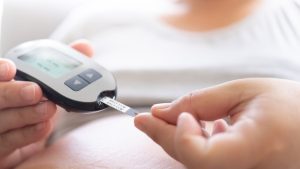Articles / Babies almost all try crawling to get from Point A to Point B, but CDC says it’s not a useful developmental milestone


writer
Associate Dean for Research and Professor of Biomechanics, Kennesaw State University
For a pediatrician, these milestones are useful indicators of typical or atypical development. When they occur outside that normal range, it might be time to look for some underlying cause, which could enable early detection and intervention if something’s amiss.
Since 2004, the U.S. Centers for Disease Control and Prevention has published a set of milestone checklists as part of its “Learn the Signs. Act Early” program. Important skills are listed for a series of ages, enabling anxious parents to know whether baby is developing typically.
In early 2022, the CDC published a major update to the milestones. The new version has a much stronger basis in research evidence and has attempted to simplify language and help caregivers know when to contact a health care provider. Among all the changes, a major milestone was removed. Crawling no longer appears in the milestone checklists.
As infants develop awareness of the world around them, they naturally start wanting to explore it. Mobility is the gateway to that exploration. Crawling is typically an infant’s first efficient strategy to get from Point A to Point B, and it often means that new parents must suddenly baby-proof their home and make sure all the Point Bs are safe.
Crawling is a transitional phase of mobility – children and adults are capable of crawling but choose to walk if they’re able to do so – and it often overlaps with precursors to walking such as pulling-to-stand and “cruising” while holding on to furniture.
Studies have indicated that over 80% of infants progress through hands-and-knees crawling during development of locomotion. Others use alternative crawling strategies like scooting along on their bottoms, or rolling.
The World Health Organization studied hundreds of children around the world and found that, on average, children develop hands-and-knees crawling by 8.5 months of age. But that’s just an average. Of course babies each develop on their own schedule. The range for starting to crawl (the 1st percentile to the 99th) was 5.2 to 13.5 months. And 4.3% of the babies in the study skipped hands-and-knees crawling altogether.
Clinicians who work with children have long recognized the importance of motor development. Scientists have called motor behaviors the “raw material for perception, cognition, and social interaction.” In particular, crawling can be an early window to understanding a child’s problem-solving strategies. And researchers have used movement analysis at 4-6 months, when some babies are getting close to hands-and-knees crawling, for early diagnosis of disorders such as autism and cerebral palsy.
Therapists worry that removing crawling from the milestone list means it will be devalued and the important physical, sensory and cognitive benefits it affords for the baby will be missed when evaluating childhood development.
Much of the CDC’s reasoning for removing crawling from the milestone list is centered on data.
Pediatricians have charts that say how fast children typically walk based on their age, but no such normative data exists for crawling. There are no clear, laboratory-based descriptions of the various types of crawling. We lack long-term studies that show when babies transition between patterns. And there are very few studies on the implications of skipping crawling and going straight to walking.
Despite these data gaps, crawling has been studied for nearly a century, and researchers have used it to understand the complex development of multiple neuromotor systems. Crawling is also important in understanding developmental continuity, or where new skills grow from.
Nonetheless, the CDC is correct: There are no age-based normative data charts for crawling as there are for walking.
As a biomedical engineer who specializes in pediatric locomotion biomechanics, I have firsthand knowledge of this lack of crawling data.
I’ve used a technique called 3D motion analysis for decades to gather minute details on the walking of children with limb loss, cerebral palsy and other neuromotor conditions, all in an effort to help improve their mobility. My colleagues and I attach small markers to skeletal landmarks like hips and knees, and special cameras track the markers and reconstruct skeletal movement.
But among all my lab’s studies on walking, I’ve completed only one 3D motion analysis study on crawling. We examined the motion of very young children with limb loss in a new prosthetic treatment protocol developed here at Children’s Healthcare of Atlanta – but it was really tricky to do.
We had to create new musculoskeletal models for our analysis system. We had to use tiny reflective markers, because babies make more contact with the ground than older kids, and a big marker might be uncomfortable. We had to position cameras at new angles to track those tiny markers. Diapers created a big challenge, given their movement relative to the baby’s skeleton.
And as any parent or caregiver can attest, babies can be a tough population to work with. They don’t follow directions well, they’re temperamental, and they’ll pull a reflective marker off their skin and pop it in their mouth in a second if you let them. We had to watch our study subjects like hawks.
In short, crawling is just more difficult to study than walking.
To address this challenge, my colleagues and I are now embarking on what we believe is the largest lab-based study of infant crawling development. We’re studying babies from their first crawling attempts all the way through their transition to walking.
This study relies on a new technique with a pressure-sensing pathway that avoids the complications of 3D motion capture. We’ll see 75 typically developing infants, and also study children with limb loss and cerebral palsy.
Our goal is to gain insights into how children transition from crawling to walking, with the hope they will one day help health care providers understand early motor development and spot neuromotor issues earlier.
We’re also hopeful that these hundreds of visits to the lab will result in the first normative data set on crawling development, addressing some of the issues that prompted the CDC to remove crawling from the milestone list. So, while our lab stays full of toys, Cheerios and baby wipes for a few years, we’re generating data that might improve parents’ and clinicians’ understanding of early motor development.![]()
Mark Geil, Associate Dean for Research and Professor of Biomechanics, Kennesaw State University
This article is republished from The Conversation under a Creative Commons license. Read the original article.
![]()

Managing Paediatric Anxiety in General Practice

OSA – Which Test for Which Patient

Musculoskeletal Health in Menopause

AHPRA-Proof Your Practice – Social Media Risks for GPs

writer
Associate Dean for Research and Professor of Biomechanics, Kennesaw State University



Strongly agree
Somewhat agree
Neutral
Somewhat disagree
strongly disagree
Listen to expert interviews.
Click to open in a new tab
Browse the latest articles from Healthed.
Once you confirm you’ve read this article you can complete a Patient Case Review to earn 0.5 hours CPD in the Reviewing Performance (RP) category.
Select ‘Confirm & learn‘ when you have read this article in its entirety and you will be taken to begin your Patient Case Review.
Menopause and MHT
Multiple sclerosis vs antibody disease
Using SGLT2 to reduce cardiovascular death in T2D
Peripheral arterial disease
